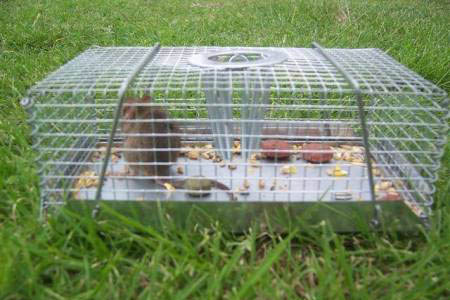
Trapping supplies play a crucial role in humane animal control, enabling individuals to safely and effectively manage wildlife populations. Whether you’re a homeowner dealing with nuisance animals or a wildlife professional, finding the right trapping supplies is essential. In this article, we will explore various sources for acquiring trapping supplies, discuss the necessary tools and equipment, and provide expert tips on implementing humane animal control methods.
1. Importance of Humane Animal Control:
Humane animal control is crucial for maintaining a balance between wildlife and human habitats. By using trapping supplies designed for humane practices, we can ensure that animals are captured safely, treated with care, and released unharmed in suitable locations. This approach not only protects both animals and people but also promotes coexistence and environmental conservation.
2. Understanding Trapping Supplies:
Trapping supplies encompass a wide range of tools and equipment used in humane animal control. These supplies include traps, baits, lures, protective gear, and accessories designed to capture animals without causing harm. Understanding the different types of trapping supplies and their functions is essential for effective and ethical animal control.
3. Where to Find Trapping Supplies:
Finding trapping supplies can be a daunting task, especially for those new to animal control. However, there are several reliable sources that provide quality trapping supplies. Let’s explore some of the best options available:
3.1 Online Retailers for Trapping Supplies:
Online retailers offer a convenient way to browse and purchase trapping supplies from the comfort of your own home. These retailers often have a wide selection of products, including traps, bait, lures, and accessories. Some popular online retailers for trapping supplies include:
- Wildlife Control Supplies: This online store specializes in wildlife control products, offering a comprehensive range of trapping supplies suitable for both professionals and homeowners.
- Havahart: Known for their humane live traps, Havahart provides a variety of trapping supplies for different animal species.
- Tractor Supply Co: A popular destination for agricultural and outdoor needs, Tractor Supply Co often carries trapping supplies in their stores and online.
3.2 Local Hardware and Farm Supply Stores:
Local hardware stores and farm supply stores can also be great places to find trapping supplies. These stores often carry a selection of traps, bait, and other essential items for animal control. Additionally, the staff at these stores can provide valuable advice and recommendations based on your specific needs.
3.3 Wildlife Control Associations and Organizations:
Wildlife control associations and organizations are excellent resources for both information and trapping supplies. Many of these associations have online stores or partnerships with suppliers, making it convenient to find quality trapping supplies while supporting wildlife conservation efforts. Check with your local wildlife control association or search online for reputable organizations that provide trapping supplies.
4. Choosing the Right Traps:
Selecting the appropriate traps for humane animal control is crucial to ensure the safety and well-being of the animals involved. Different traps are designed for specific animal species and purposes. Consider the following factors when choosing traps:
- Target Animal Species: Identify the specific animal species you need to control and choose traps that are suitable for capturing them effectively.
- Trap Size and Design: Ensure that the trap size and design align with the targeted animal’s size and behavior. This helps prevent unnecessary stress or injury.
- Trap Materials and Durability: Opt for traps made from durable materials to withstand various weather conditions and animal behaviors.
- Legal Considerations: Familiarize yourself with local laws and regulations regarding trapping methods and trap types. Some areas may have restrictions on certain trap designs or require permits.
5. Types of Traps for Humane Animal Control:
Different types of traps are used in humane animal control to address specific needs and target different animal species. Understanding the various trap options available can enhance your effectiveness in capturing and managing wildlife. Here are two commonly used types of traps:
5.1 Live Traps:
Live traps are designed to capture animals without causing harm and allow for their safe release. These traps are typically cage-like structures with one or more entrances and a mechanism that prevents animals from escaping once inside. Live traps are effective for capturing animals such as raccoons, opossums, and squirrels.
5.2 Body-Gripping Traps:
Body-gripping traps, also known as conibear traps, are designed to quickly and humanely kill captured animals. These traps consist of a strong spring-loaded mechanism that closes around an animal’s body, providing a swift and humane end. Body-gripping traps are commonly used for controlling larger animals like raccoons, muskrats, and beavers.
6. Trap Accessories and Modifications:
To improve trap effectiveness and target specific animal species, various accessories and modifications can be used in conjunction with traps. These include:
- Trap Covers and Dividers: Covers and dividers help create a dark and secure environment inside traps, reducing stress and increasing capture rates.
- Bait Cages: Bait cages securely hold bait within traps, preventing animals from taking the bait without triggering the trap.
- Trail Cameras: Trail cameras can be placed near traps to monitor animal activity, allowing for better trap placement and timing.
- Modifications for Target Species: Some traps can be modified with specific triggers or mechanisms to better target certain animal species.
7. Bait and Lures for Trapping:
Using the right bait and lures can significantly increase trap success rates. Different animals are attracted to specific scents and food items, so selecting the appropriate bait is essential. Consider the following tips when choosing bait and lures:
- Research Animal Preferences: Learn about the dietary preferences and scents that attract the target animal species.
- Freshness and Quality: Ensure that baits are fresh and of good quality to maximize their appeal.
- Experiment with Different Options: If one bait doesn’t yield results, try different options until you find the most effective one for your target species.
8. Proper Handling and Release of Animals:
The ethical treatment of captured animals is paramount in humane animal control. Once an animal is trapped, it’s crucial to handle and release it properly to minimize stress and maximize its chances of survival. Follow these guidelines for proper handling and release:
- Protective Gear: Wear gloves and other protective gear when handling trapped animals to minimize the risk of injury and prevent the transmission of diseases.
- Gentle Approach: Approach trapped animals calmly and quietly to avoid additional stress.
- Secure Transfer: Safely transfer animals from traps to transport containers using techniques that minimize the risk of harm to both the animal and handler.
- Release in Suitable Habitat: Release animals in suitable habitats away from human populations and potential hazards.
9. Safety Precautions for Trapping:
Trapping, while essential for animal control, carries inherent risks. It’s crucial to prioritize safety to prevent accidents or injuries. Consider the following safety precautions:
- Knowledge and Training: Educate yourself about safe trapping techniques and seek proper training if needed.
- Protective Gear: Wear appropriate protective gear, such as gloves and safety glasses, to safeguard against bites, scratches, and other potential hazards.
- Awareness of Surroundings: Be aware of your surroundings when setting traps to avoid accidental harm to yourself, others, or non-target animals.
- Proper Trap Placement: Position traps securely and strategically to prevent unintended consequences and ensure the safety of both animals and people.
10. Tips for Successful Trapping:
Implementing effective trapping strategies can improve your success in humane animal control. Consider the following tips to enhance your trapping efforts:
- Location, Location, Location: Place traps in areas where the target animal species are known to frequent, such as near their burrows or along their travel routes.
- Timing: Consider the time of day and season when animals are most active and likely to encounter traps.
- Camouflage and Concealment: Camouflage traps to blend with the environment and use natural materials to conceal them, reducing suspicion and increasing capture rates.
- Regular Monitoring: Check traps frequently to minimize the time animals spend in captivity and reduce stress levels.
- Record Keeping: Maintain records of trap placement, catches, and other relevant information to evaluate the effectiveness of your trapping efforts.
11. Ethical Considerations in Humane Animal Control:
Ethics play a vital role in humane animal control. It’s essential to approach animal control practices with compassion, respect, and a commitment to minimizing harm. Consider the following ethical considerations:
- Minimize Distress: Strive to minimize the stress, pain, and suffering experienced by animals during trapping and handling processes.
- Respect Wildlife: Acknowledge the intrinsic value of wildlife and their roles in ecosystems, treating them with respect and avoiding unnecessary harm.
- Continuous Learning: Stay informed about the latest humane animal control methods and research to improve your practices.
- Collaboration: Collaborate with wildlife professionals, conservation organizations, and local authorities to ensure the most effective and ethical animal control measures are employed.
12. Frequently Asked Questions:
Q: How do I choose the right size trap for the target animal?
A: When choosing a trap size, consider the dimensions and weight range of the target animal. It’s crucial to select a trap that provides enough space for the animal while preventing escape.
Q: Where should I place the trap to capture a specific animal?
A: To capture a specific animal, research their habits and habitats. Place the trap in areas where the animal is known to travel or near their food sources or dens.
Q: Can I relocate a trapped animal to a different area?
A: Relocating animals should be done with caution and in compliance with local laws and regulations. In some cases, relocation may not be allowed or may pose risks to the animal or its new environment.
Q: How often should I check the traps?
A: Traps should be checked frequently to minimize the time animals spend in captivity. As a general guideline, check traps at least once every 24 hours.
Q: Are there alternatives to trapping for humane animal control?
A: Yes, there are various alternatives to trapping, such as exclusion techniques, habitat modification, and deterrents. These methods can be effective in certain situations and should be considered alongside trapping.
Q: How can I ensure the safety of non-target animals?
A: Take precautions to minimize the risk of trapping non-target animals. Use specific trap designs, bait, and placement techniques that reduce the likelihood of unintentional captures.
Conclusion:
Finding the right trapping supplies for humane animal control is essential for effective wildlife management. By understanding where to find trapping supplies, choosing the right traps, and implementing ethical practices, individuals can contribute to the well-being of both animals and their communities. Remember, responsible and compassionate animal control is the key to achieving harmony between humans and wildlife.




